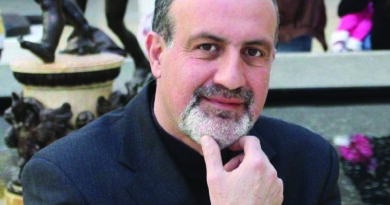Asset 2.0
During the past few years, the current structure of the Asset associations has been proven to be challenging. Therefore, certain structural changes are needed to solve the underlying issues and improve the cooperation between the faculty association and the study associations.
History
During the beginning of this century, the landscape of study associations related to TiSEM looked completely different: Asset did not exist yet and our beloved association was still called TEV (Tilburgse Econometristen Vereniging), the name it was given when it was founded in 1979. It were times in which many associations were competing with each other and did not cooperate well. This was however not true for TEV, since we had and still have a clear target group. At some point the university wanted to change this: they put pressure on the associations by threatening to cut the board grants (bestuursmaanden in Dutch) by almost 50%. This could be avoided by forming the current Asset structure. TEV did not always intend to join, but after long negotiations agreed that joining would be best. In the summer of 2008, it happened: the current Asset structure was born.
In the years after it, it was clear that the vision of Faculty Association Asset was not always in line with the visions of the associated study associations. Because of this, cooperation was quite hard and too much time was spent on discussing rather than on organizing and serving our students. The cooperation between the associations also had brought many good things, like the ever growing Asset In-House Days, symposia organized with Asset | Economics and Asset | Strategy & Logistics, and other associations organizing activities together. It was however clear that this Asset structure was sub-optimal, and certain changes had to be made. Discussions started again in the academic year 2010-2011, with the University as a mediator. Unfortunately these negotiations did not result in an agreement and in end of 2011 we received a letter from Hein van Oorschot, president of the executive board of the university, stating that a solution had to be found or otherwise all associations would lose access the facilities currently offered by the University.
Solution
To find a solution, the seven study associations started working on a plan together, also with the help of external advisors and University. The main difference with the current structure is that the Asset board will not continue to exist in its current form: it will be formed by the chairmen from the seven study associations and one independent chairman. The seven chairmen delegated from the associations will have to split their time between their own association and the faculty association.
Portfolios
Every chairmen will be responsible for a certain portfolio. Our candidate chairman will be responsible for the portfolio Acquisition. This portfolio and the other portfolios consist of, but are not limited to the following responsibilities:
- Independent Chairman: chairman GMM, chairman central board meetings, contact person University, Contact with SAM & Front, representative TiGeak
- Administration (Strategy & Logistics): Book reductions, Member administration, Interfaculty Symposium, Factum Est
- Media (SBIT): Website, magazine
- Promotion + Bedrijfseconomie (Marketing): Coordination Asset Academy, TOP-week, Orientation Day
- Acquisition (Econometrics): Coordination AO, EBT, coordination InHouse Days
- Finance (A&F): central administration, tax and insurance, contribution
- Events 1 (Economics): International Conference, Events, Consultancy Experience
- Events 2 (FIRST): International Experience, Food for thought
The new Asset board will be responsible for discussing and solving the problems together. Because the board members are delegated from the study associations, all the study associations are represented equally. As a result the vision and policy of the Faculty association will be in line with the vision and policy of the study associations. This will strengthen the cooperation and coherence between the different associations and solve the current problems.
Hence the current Asset committees will be divided over the aforementioned portfolios. These committees will be filled with members currently active at Asset, members from the study associations and board members. The study associations will promote the possibilities the faculty association has to offer even more than they used to. For active members that like to look further than their respective study association, there are many opportunities in committees of the faculty-wide activities. One can for instance think of the Asset Congress or the International Experience. These are activities that can only be offered on a faculty-wide level.
This plan was presented on the 8th of May to our members. In our original plan, all associations would still be separate legal entities. However, the University would only approve this plan under the condition that we will merge into one legal entity. The University does not allow each association to have a GMM, because they are under the impression this will always lead to unwanted discussions among the boards and members. This development has not changed our plans apart from the new legal structure.
For the (active) members of Asset | Econometrics not much changes: we will still have the same committees coordinated by our own board members, have control over our own budget, policy etc. Also we will offer the same range of activities next year especially for our members. These changes are more noticeable for the board members, with the chairman in particular. We will also still have our own GMM, only the name will change: it will be called ‘Department Meeting’ or ‘Specific Members Meeting’. The power of this meeting will be limited however, since most decisions have to be taken on a higher level.
All seven associations agree, that by making these structural changes, the underlying structural problems should be cleared and that the corporations between the study associations and the faculty association will improve to bring all associations to a higher level and to serve all the TiSEM students in an optimal way. The big lines of the plan are worked out, and it will be the task of the current boards and their successors to fill in the details and make this new structure a great success!



